A very striking and very familiar backyard bird across most of eastern North America.
Meet the Northern (Red) Cardinal
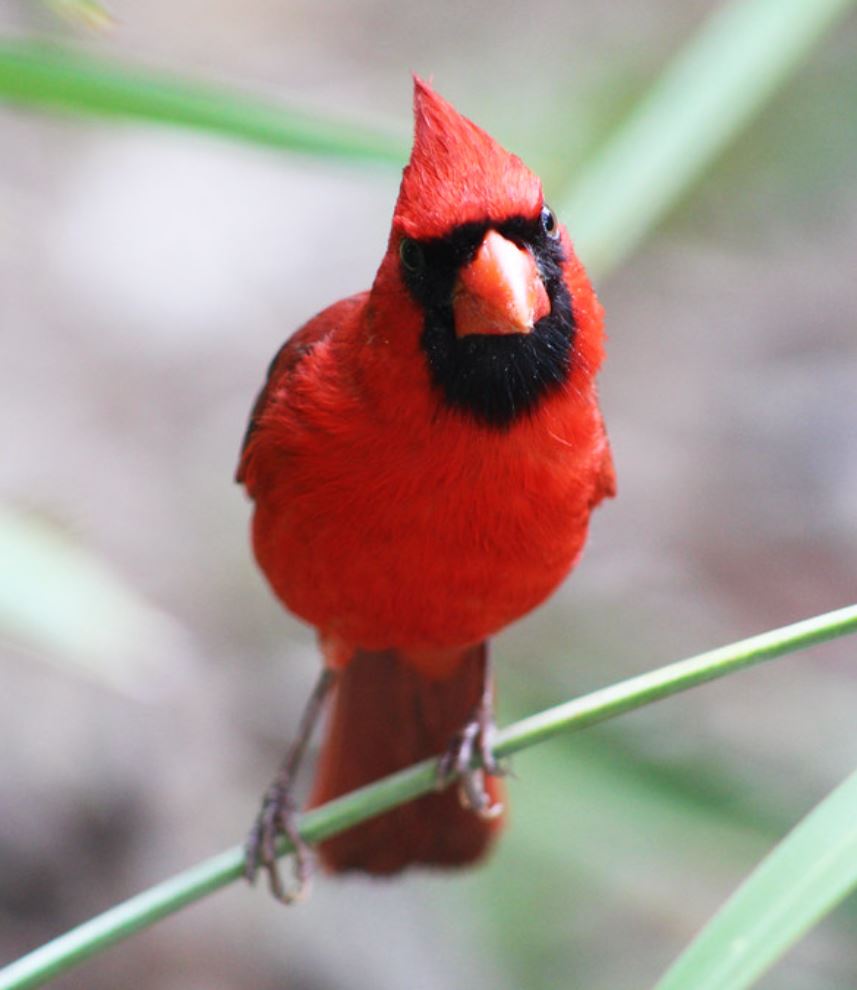
“Northern Cardinal” by evergladesnps is (cropped) marked with Public Domain Mark 1.0.
The northern cardinal (Cardinalis cardinalis) is a bird that is so hard to resist. They are lively, bright, and lovely singers. At around 9 inches long, they have a wingspan of 12 inches. Flashy to say the least they are hard to miss in the wild with the males’ scarlet plumage and long tails.
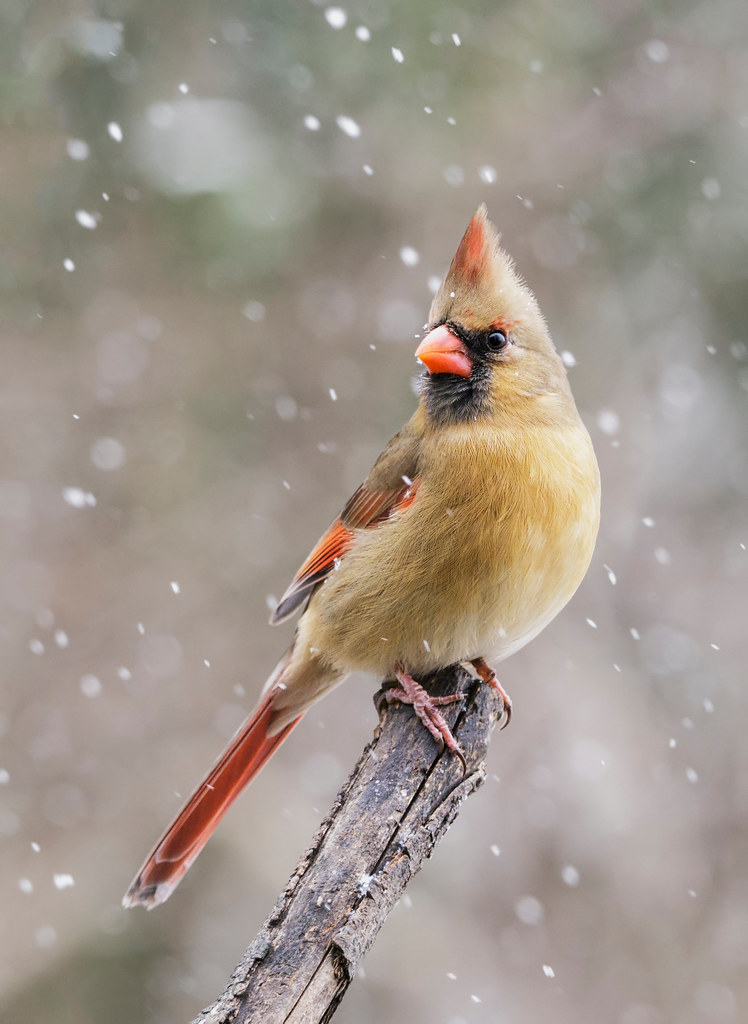
“Northern Cardinal” by ShenandoahNPS is marked with Public Domain Mark 1.0.
Both males and females sport an impressive crest, though, with a reddish tan, females are less showy. The male is bright red with a black mask. He also wears a prominent crest and pink or orange bill.
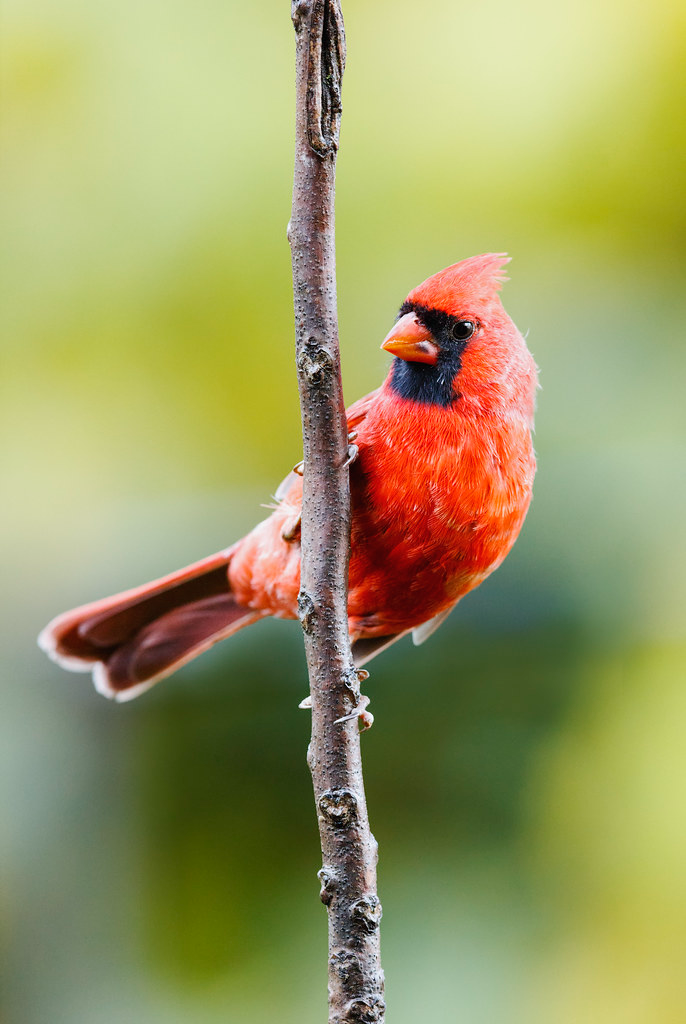
“Northern Cardinal (male)” by ShenandoahNPS is marked with Public Domain Mark 1.0.
If you happen to see a male, there’s a good chance there is a female nearby.
This is especially the case during the breeding season. The female of this species is fawn-colored with red accents.
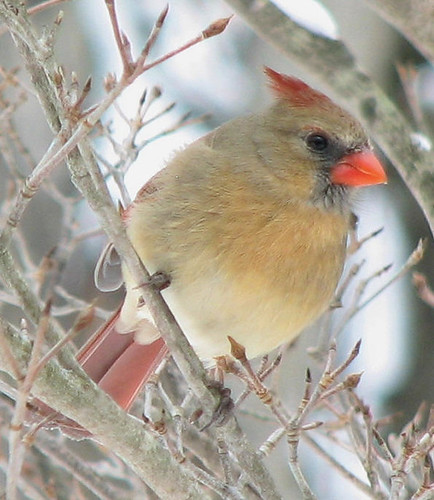
“Cardinalis cardinalis (northern cardinal) 5” by James St. John is licensed under CC BY 2.0.
Northern cardinals are non-migratory birds, so residents of the eastern half of the United States are lucky enough to view these birds throughout the year. They are known to show up anywhere with dense low cover, such as parks, forests, swamps, and backyards. These birds like to dine on a diet that consists mainly (up to 90%) of weed seeds, grains, and fruits. It is a ground feeder and finds food while hopping on the ground through trees or shrubbery. It will also consume snails and insects, including beetles, cicadas, and grasshoppers.
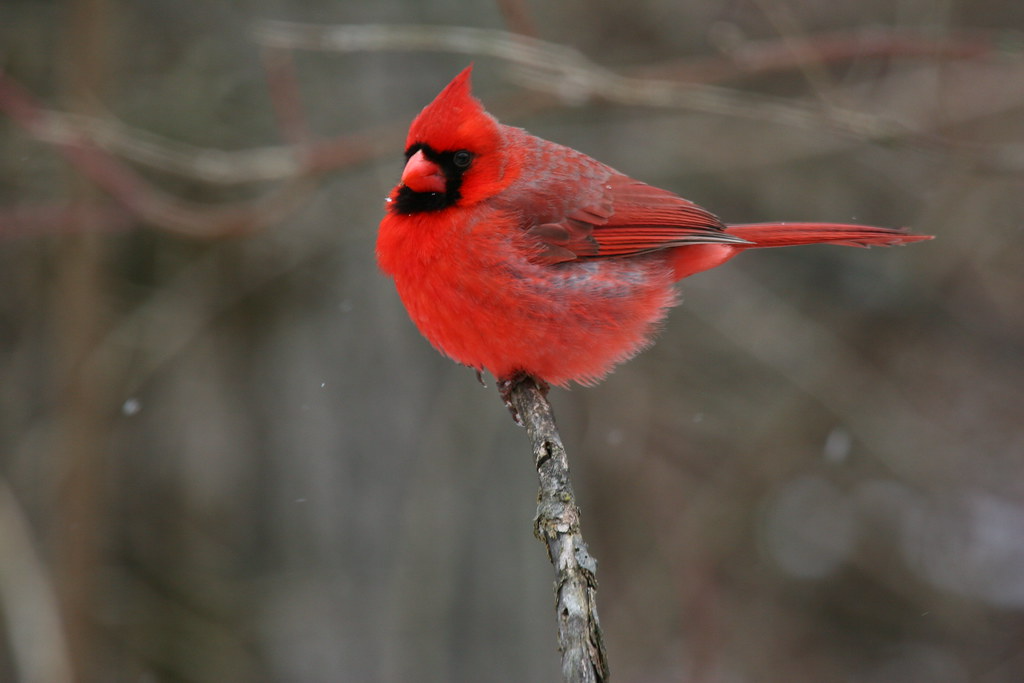
“Northern Cardinal (Cardinalis cardinalis)” by Dominic Sherony is licensed under CC BY-SA 2.0.
One interesting thing to note, in the bird world mainly males sing. However, the Northern Cardinal is one of the few bird species where the female also sings. A pair of cardinals may also share song phrases, using them as a form of communication during nesting time. Females are also known to sing back and forth with a potential mate.

“Northern Cardinal” by Andy Morffew is licensed under CC BY 2.0.
If you hang up a bird feeder in cardinal territory you are sure to get visitors almost immediately. Somehow they seem to recognize the shape of a feeder, and their mere presence seems to attract other birds. You can feed them black oil sunflower seeds or safflower seeds.
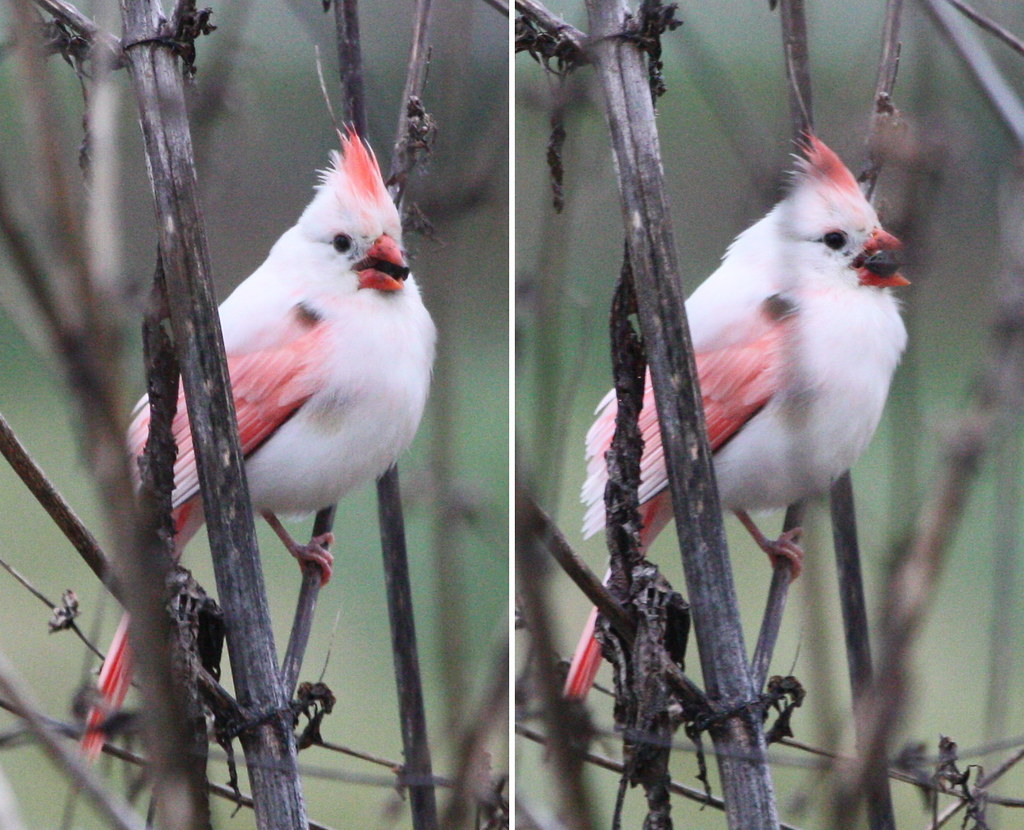
“Northern Cardinal (Cardinalis cardinalis) 2 of 4” by Paul.J.Hurtado is licensed under CC BY-SA 2.0.
Cardinals generally like to live and stay in the same area, which in turn helps them get a jump-start on nesting, with some even laying eggs as early as February. A long breeding season makes for multiple broods each and every year under good conditions, ensuring the survival of offspring. Around 20% of pairs separate each year, however, some couples remain together for several breeding seasons.
It takes three to nine days for a cardinal pair to build a nest, with the female cardinal doing most of the work. Young baby cardinals are pretty demanding—in the first days after they hatch, their parents feed them up to eight times an hour!
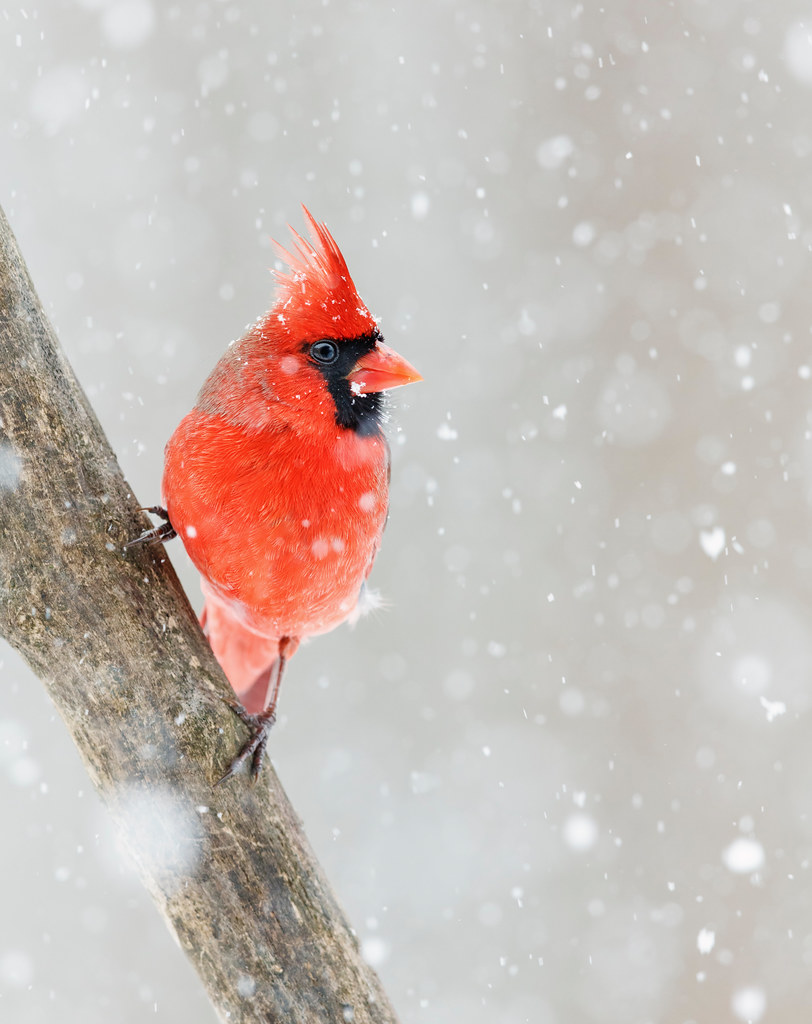
“Northern Cardinal” by ShenandoahNPS is marked with Public Domain Mark 1.0.
Another interesting cardinal bird fact—the male’s bold red coloration is thought to help attract mates. The brightness of plumage is related to diet. Male cardinals’ vivid red color comes from carotenoid pigments, which are found in red fruits. Eating more of these scarlet-hued berries, especially during molting, helps a male form brighter red feathers. The flashy color boosts the bird’s ability to successfully attract mates and defend a pair’s nesting territory.
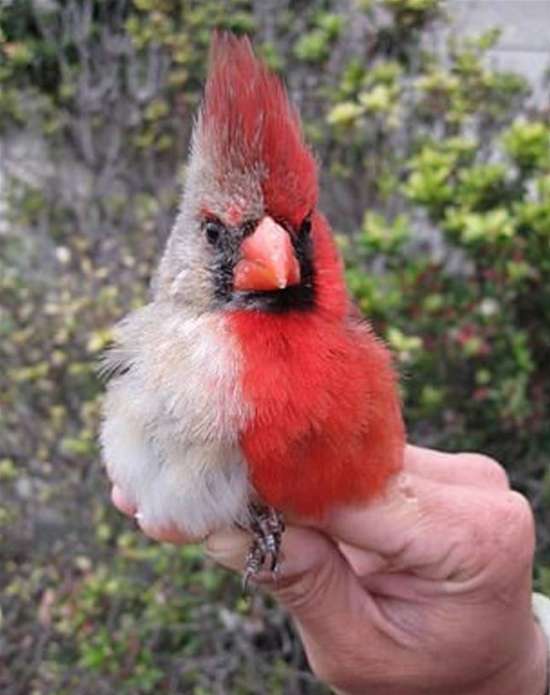
Photo Courtesy of Inland Bird Banding Association
Rare genetic variations called xanthochroism can cause cardinals to be yellow instead of the familiar red. You may also be lucky to spot white cardinals and other leucistic birds. Some scientists suggest that cardinals in the Sonoran Desert might actually be a different species from those found elsewhere in the United States, despite their proximity to northern cardinals in other southwestern deserts. Cardinals in the Sonoran Desert are somewhat larger, with longer crests, and the males are a paler red color. They also have slightly different songs.
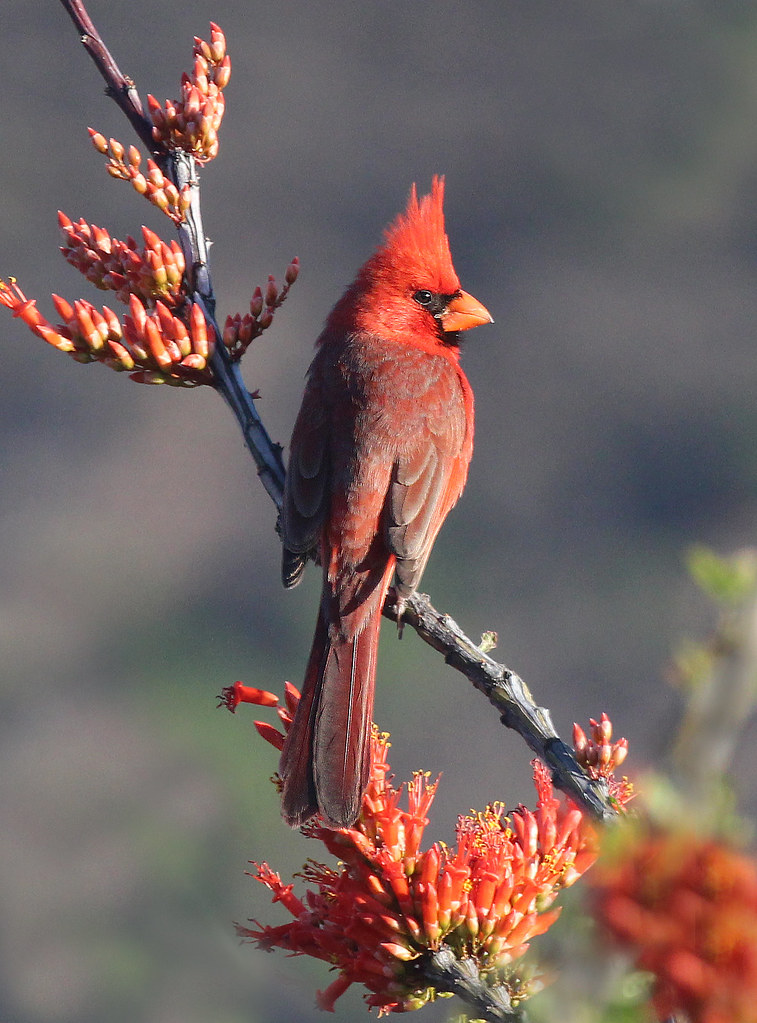
“916 – NORTHERN CARDINAL (4-14-2015) sonoita creek state natural area, santa cruz co, az -01” by Sloalan is marked with CC0 1.0.
Cardinals are known to fiercely defend their territories, which has made them a fitting mascot for athletic teams. In professional sports, two teams are named for this bright red bird and its fighting spirit: the NFL’s Arizona Cardinals and MLB’s St. Louis Cardinals.

“Northern Cardinal [96/100]” by timsackton is licensed under CC BY-SA 2.0.
You can watch and listen to this bird right here below:




